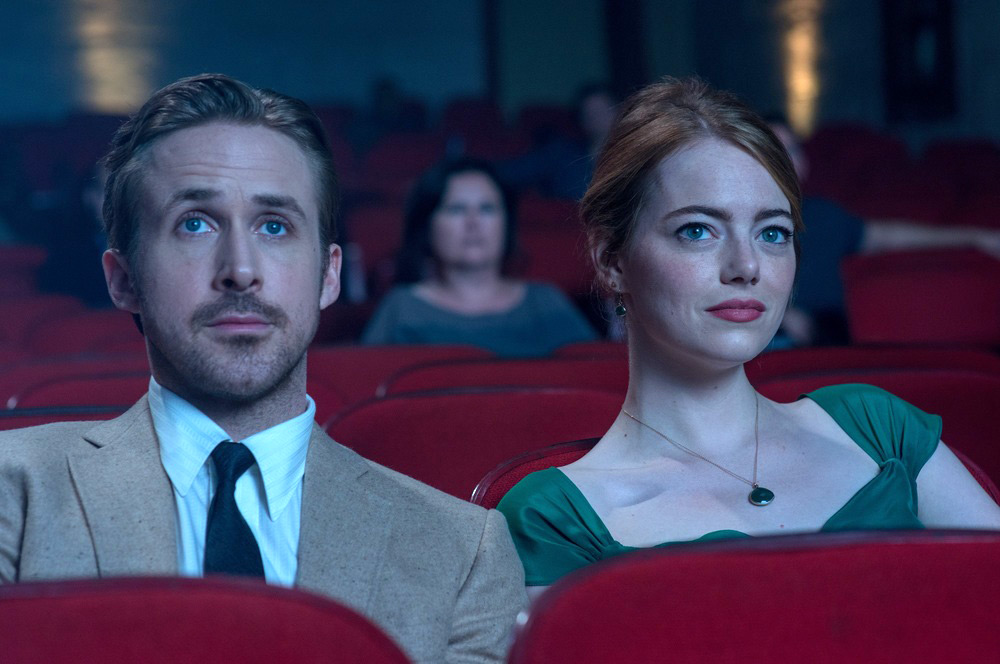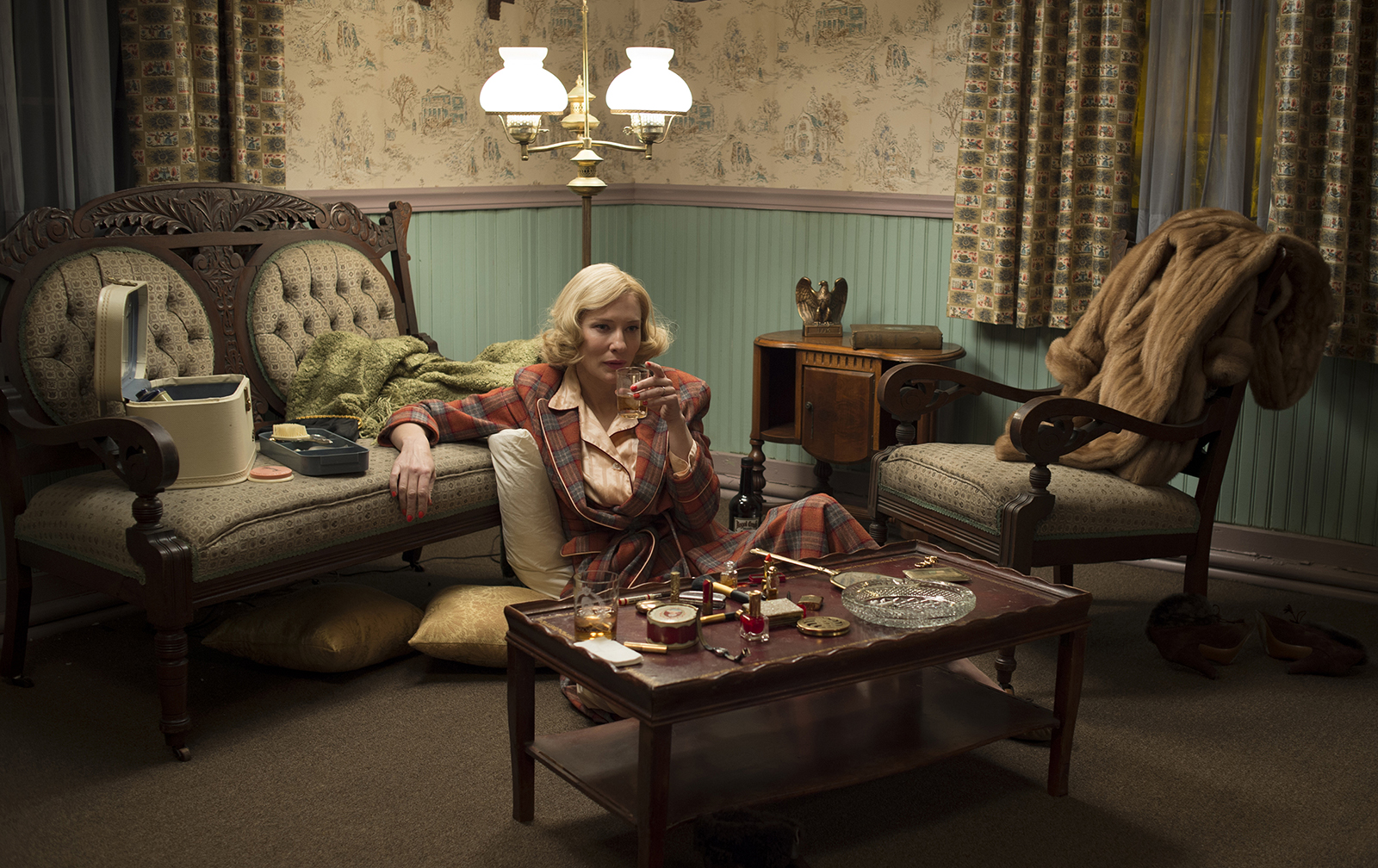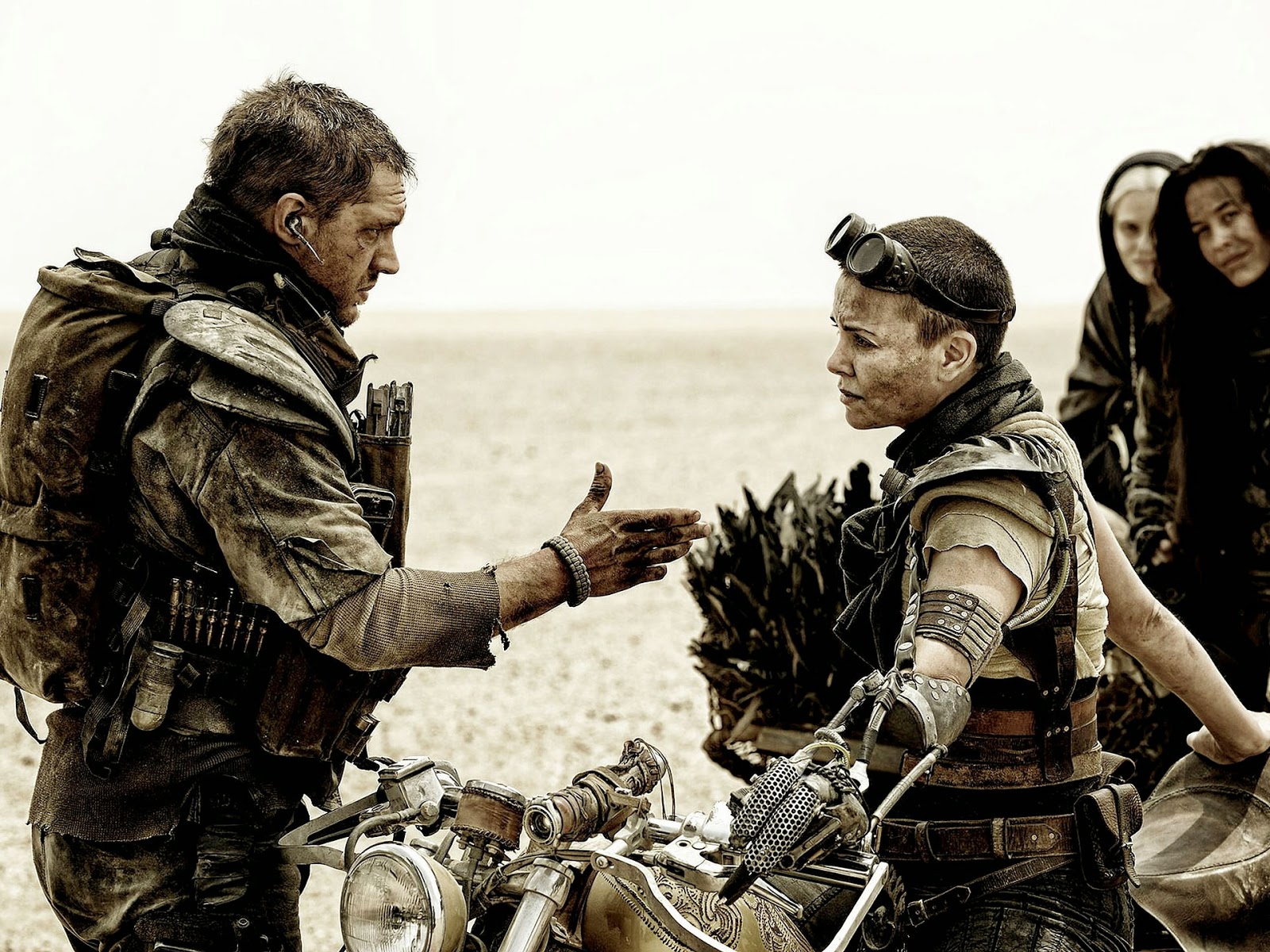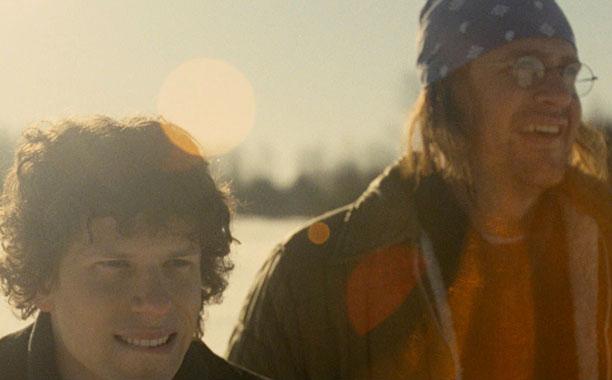Mad Max: Fury Road is the best political film of 2015. The pleasure I take in saying that is more immense than I can explain coherently. My father raised me, cinematically speaking, on the masterpieces of the 1970s—All the President’s Men, One Flew over the Cuckoo’s Nest, Dog Day Afternoon—and if nothing else, what is apparent in those films is a steadfast political atmosphere. Today, for better or worse, the films we see on screen are politically noncommittal. One either has to dig for any political subtext, or it exists as middle ground between two more devoted extremes. George Miller, the veteran filmmaker (of the previous Mad Max films, as well as both Happy Feet—fun fact), directs Fury Road, whether he admits it or not, fully aware of the feminist charge that electrifies the entire film.
The film begins with the eponymous hero, Max (Tom Hardy). He provides us with expository detail, and as soon as we understand the post-apocalyptic context, he is appropriately done away with—captured, branded, and turned into a human blood bag, used to energize the War Boys, who do the bidding of the savage patriarch Immortan Joe (Hugh Keays-Byrne). The narrative push of the film—entirely predicated upon the road/chase genre—is that Imperator Furiosa (Charlize Theron), an elite soldier, assists Joe’s wives in escaping to the paradisiacal “Green Place.” Joe and his War Boys promptly follow them: Joe values above all else the wives and their fertility. It is a combination of Road Runner & Wile E. Coyote cartoons with the Western civilization’s eternal yearning for Eden.
The society constructed in the film is the exaggerated extreme (though not without its truth) of the 1% vs. the 99%. Joe and his enslaved wives, along with other fraternal figures, control an apparent endless flow of water, which they eek out to the rest of society infrequently. What is continuously amusing is the vehicular quality that the patriarch has. Cars, engines, chrome—these are the things that the War Boys cherish and worship. Displays of machismo are what they live for: any particularly valiant or courageous or stupid act is preceded by spraying their mouths chrome and calling out, “Witness me!”
Antithetical to that patriarchal, self-righteous calling of “Witness me!” is the graffiti’d “Who killed the world?” echoed by Furiosa and the Wives throughout the film. And this is echoed even more powerfully, in a scene that brings to mind the universe creation sequence in Terrence Malick’s The Tree of Life, by a nuclear dust storm that rages around Furiosa, Max (who gets strapped to the front of one of the War Boy’s cars), and her other pursuers. It is a great scene, masterfully handled that could be and should be studied by all other action filmmakers today. I remember reading a critique of modern action films that said that they now consist of incredibly large explosive sequences following each other; the result: desensitization. There’s no awe anymore, because it’s so monotone. Miller keeps the awe in, elevating the tragedy of the situation to transcendent levels. For a moment, we see, unfiltered, what it means to kill the world. It is beyond us, and it is horrifying.
The other striking quality about Fury Road is the silences Miller allows. When he wants to, Miller makes the action non-stop: we get extensive sequences of highly choreographed explosions and car chase gun shootouts, and just when we think it’s over, something even bigger, even more mind-blowing occurs. But Miller is adept at drama as well, and moments of quiet human tenderness keep Fury Road grounded. If superhero movies, for example, are predicated on a hopelessly unachievable everyman (or rather everyperson) desire to become greater than ourselves, to be super, then Fury Road’s human core is a return to a world where the value of life is still worth something on a fundamental level, and not because those with power determine it.
That’s the feminism of the film. The common misconception of feminism that is used to make it marketable is that it is the empowerment of women; therefore, films with strong female characters are referred to as feminist simply because a woman has agency. But feminism as a politico-social movement moves beyond that, and its true goal is the deconstruction of gender roles, and therefore patriarchy. Furiosa and the wives lead the film towards that goal. The masculinity glorified in the film is damaging, and any intelligent viewer will know this. A powerful moment comes when Joe’s son is delivered stillborn. Joe and the rest of the War Boys immediately glorify him, being a son. From day one, from birth, there is a rigid, violent, and non-negotiable male gender role enforced by this society that exists to perpetuate men just like Immortan Joe.
This is what “movies” should aspire to. The most pessimistic phrase one can say about movies is: “It’s just a movie.” And it is always used to excuse films for not doing enough; it is an excuse for the lackluster. Why can’t all big-budget blockbuster films be like Mad Max: Fury Road? Why can’t they all be technically sound, reliant on practical special effects and use CGI only if necessary or as a gloss? Why can’t they utilize the visual for storytelling in addition to spectacle? And, most importantly, why can’t we use the medium of film to say something, regardless of what it is? The best films, whether it’s Fury Road, or The Tree of Life, All the President’s Men, or Star Wars—we leave these films feeling profoundly changed, because we have experienced something that mattered: we have experienced that those who made these films have something to show us, something that has meaning. Not the backwash of opinions, diluted by a desire to please everyone. Fury Road is an angry, impassioned, uncompromising, eloquent film—made with meaning, and made by people who thought the meaning mattered.
Postscript: Mad Max: Fury Road was edited by Margaret Sixel, predominantly a documentary editor. The art of editing is under-recognized, as are the accomplishments in, and contributions to, the art of cinema by women, who have been making and working in films just as long as men.









Recent Comments